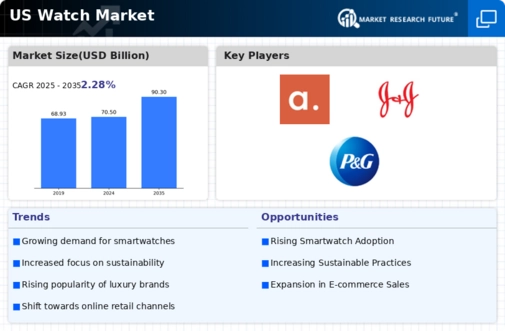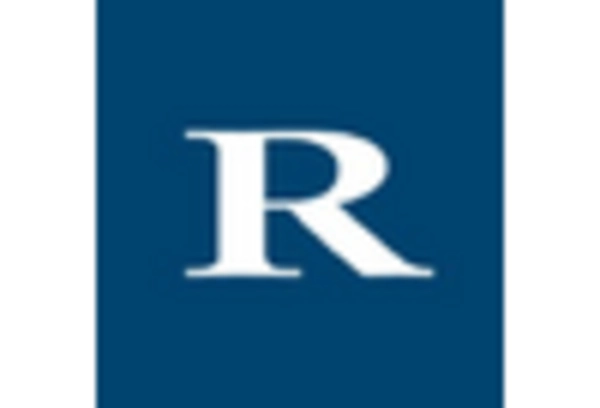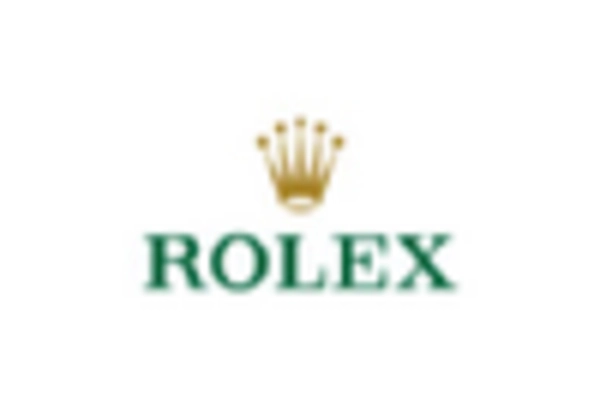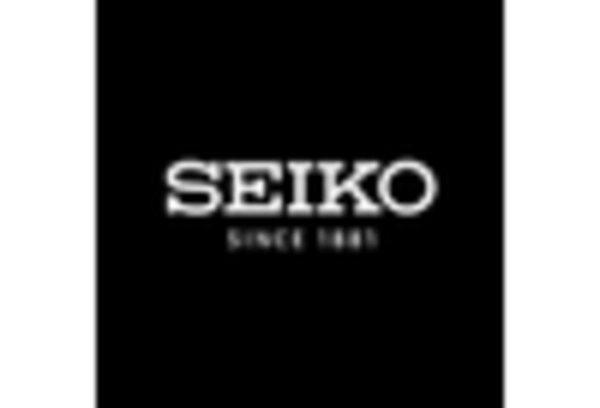The watch market in the US exhibits a dynamic competitive landscape characterized by a blend of traditional craftsmanship and modern technological advancements. Key players such as Rolex (CH), LVMH (FR), and Fossil Group (US) are at the forefront, each adopting distinct strategies to enhance their market presence. Rolex (CH) continues to emphasize exclusivity and luxury, focusing on limited editions and high-quality materials, which reinforces its brand prestige. In contrast, LVMH (FR) leverages its diverse portfolio to integrate luxury with innovation, particularly through digital channels, thereby appealing to a younger demographic. Fossil Group (US), on the other hand, is pivoting towards smartwatches, aiming to capture the growing segment of tech-savvy consumers, which indicates a shift in consumer preferences towards multifunctional timepieces.
The business tactics employed by these companies reflect a nuanced understanding of market demands. Localizing manufacturing and optimizing supply chains are prevalent strategies, particularly among brands like Fossil Group (US), which has been enhancing its production capabilities domestically to reduce lead times and improve responsiveness to market trends. The competitive structure of the market appears moderately fragmented, with a mix of established luxury brands and emerging tech-focused companies, each contributing to a vibrant ecosystem that fosters innovation and competition.
In October 2025, Rolex (CH) announced the launch of a new line of sustainable luxury watches, utilizing recycled materials and eco-friendly production methods. This strategic move not only aligns with global sustainability trends but also positions Rolex (CH) as a leader in responsible luxury, appealing to environmentally conscious consumers. The introduction of this line is likely to enhance brand loyalty and attract a new customer base that values sustainability alongside luxury.
In September 2025, LVMH (FR) unveiled a partnership with a leading tech firm to develop advanced smartwatch features, integrating health monitoring and connectivity options. This collaboration signifies LVMH's commitment to innovation and its recognition of the growing importance of technology in the watch sector. By enhancing its smartwatch offerings, LVMH (FR) aims to solidify its position in the competitive landscape, catering to the increasing demand for multifunctional devices.
In August 2025, Fossil Group (US) launched a new marketing campaign targeting Gen Z consumers, emphasizing the blend of fashion and technology in its smartwatch lineup. This initiative reflects a strategic pivot towards digital marketing and social media engagement, which is crucial for reaching younger audiences. By aligning its brand with contemporary lifestyle trends, Fossil Group (US) seeks to differentiate itself in a crowded market and drive sales growth.
As of November 2025, the watch market is increasingly defined by trends such as digitalization, sustainability, and the integration of artificial intelligence. Strategic alliances among key players are shaping the competitive landscape, fostering innovation and enhancing product offerings. The shift from price-based competition to a focus on technological advancement and supply chain reliability is evident, suggesting that future differentiation will hinge on the ability to innovate and adapt to evolving consumer preferences.

















Leave a Comment